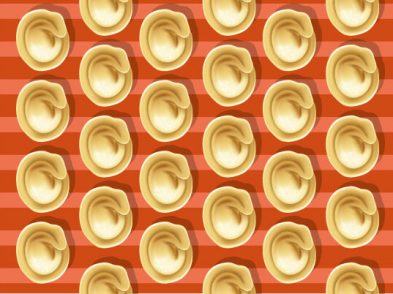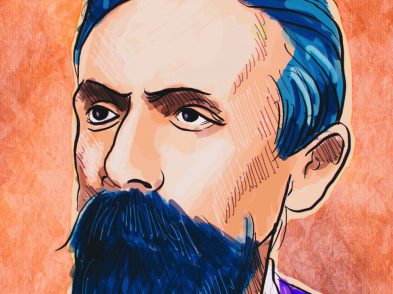In the nineteenth and early twentieth centuries, Bagni di Lucca, a spa town not far from Lucca, was much loved by foreigners, some of whom were passing through, while others settled there permanently. The English Cemetery there holds the remains of many interesting and illustrious expats. If you go, look for two identical, tall stark white marble crosses standing side by side. They bear the names of two Americans buried there: Rose Elizabeth Cleveland and Evangeline E.T. Whipple. A little farther away is the grave of their friend, English illustrator and painter Nelly Eriksen.

ph. Piero Pirro
Each of these three women has her own unique story, but the life of Rose Elizabeth Cleveland is the most extraordinary. Known as ‘Libby’ to family and friends, she was the sister of Grover Cleveland, the 22nd and 24th president of the United States. He was still a bachelor at the beginning of his first term, and Rose acted as first lady from March 1885 to June 1886—not without stirring up a little controversy.
Born on June 13, 1846, in Fayetteville, New York, Rose Cleveland was the youngest of the nine children of the Reverend Richard Falley Cleveland and Anne Neal Cleveland. She was educated as a teacher and at the start of her career taught literature in both Indiana and Pennsylvania. In the early 1880s, needed at the family home, The Weeds, in Holland Park, New York, to care for her ailing mother, she began writing and editing, giving public lectures and teaching Sunday school. In 1881, her brother was elected mayor of Buffalo and in 1883 governor of New York. Upon the death of their mother in 1882, Rose Cleveland took over the domestic management of the governor’s mansion.
Grover Cleveland won the presidency in 1884 and in 1885 moved into the White House with his 38-year-old sister by his side. At a White House reception that year, her black gown caused a sensation in an age when necklines were a matter of constant scrutiny and, in the United States, a yardstick of propriety. According to the front page of the New York Times, ‘the satin bodice was cut low and sleeveless and the transparent lace revealed her shoulders and arms.’ Whilst not shunning fashion, the intellectual Rose Cleveland found society life in Washington, DC, tedious and is said to have relieved the monotony of shaking hands in long receiving lines by conjugating Greek verbs in her head.
Five days after her brother, then 48, returned from his honeymoon with his new first lady, Frances Folsom (1864–1947), Rose Cleveland left Washington forever. She had organised a wedding that made history: Grover Cleveland was the only president to get married in the White House, and his bride, age 21, was the youngest first lady. (She also became very popular—she and Grover Cleveland had five children.)

Retiring to The Weeds, Rose Cleveland resumed writing. She had already published a successful book on George Eliot’s poetry that ran to 12 editions in a year and made her a considerable amount of money. Her only novel, The Long Rush, published in 1886, did well, too. Cleveland also wrote academic and feminist texts and, later, a book on St. Augustine’s soliloquies. She sat on the editorial boards of several literary and historical magazines and taught in Chicago before returning to New York and buying her own home in Utica.
In 1889, in ill health, Rose Cleveland sought warmer weather in Naples, Florida, where she purchased two parcels of land and built a second home. As their passionate correspondence shows, this was where she met the love of her life, the wealthy young widow Evangeline Marrs Simpson (1863–1930). Their relationship was temporarily interrupted when, in 1895, Evangeline married the 74-year-old Episcopalian bishop of Minnesota, Henry Whipple, famous for his philanthropic work with Native American communities, causing Rose Cleveland to retreat to Paris.
But after Whipple’s death in 1901, she joined Evangeline Whipple in Florence, where her lover had been called to look after her sick brother. Following his death in 1912, the two women moved to Bagni di Lucca, where both quickly integrated into the local community. There, Evangeline Whipple built a school; with Rose Cleveland’s encouragement, wrote a book, A Famous Corner of Tuscany, about their new hometown; and, upon the outbreak of World War I, financed the construction of a hospital for wounded Italian soldiers.
The Spanish flu pandemic that devastated Europe just after the war claimed among its early victims their friend Nelly Eriksen, and then Rose Cleveland, who died on November 22, 1918. Twelve years later, Evangeline Whipple died during a brief visit to London.

ph. Piero Pirro
VISITOR INFORMATION The English Cemetery, in the municipality of Bagni di Lucca, is open daily from 10am to 4pm in the winter and from 10am to 6pm in the summer. For further information, contact the Biblioteca Comunale at biblioteca@comunebagnidilucca.it.
READ MORE BY DEIRDRE PIRRO
The icons of contemporary culture finally find a forum in Italian Sketches: The Faces of Modern Italy, published by The Florentine Press, a book that dares to investigate the whos and whys behind one of the world’s most-loved countries. Drawn from Pirro’s column in The Florentine, Italian Sketches portrays a nation whose modern cultural landscape remains largely undiscovered.








